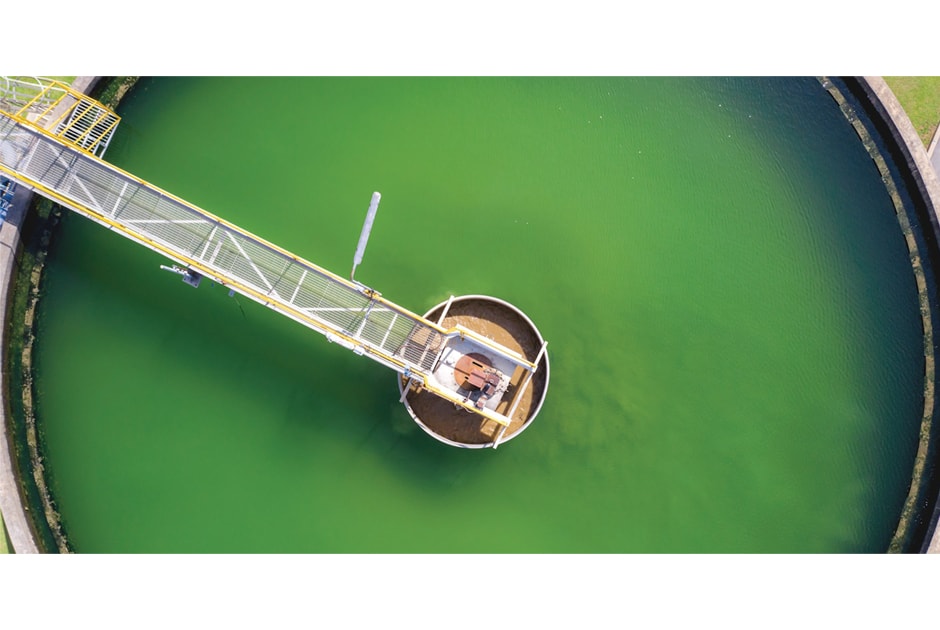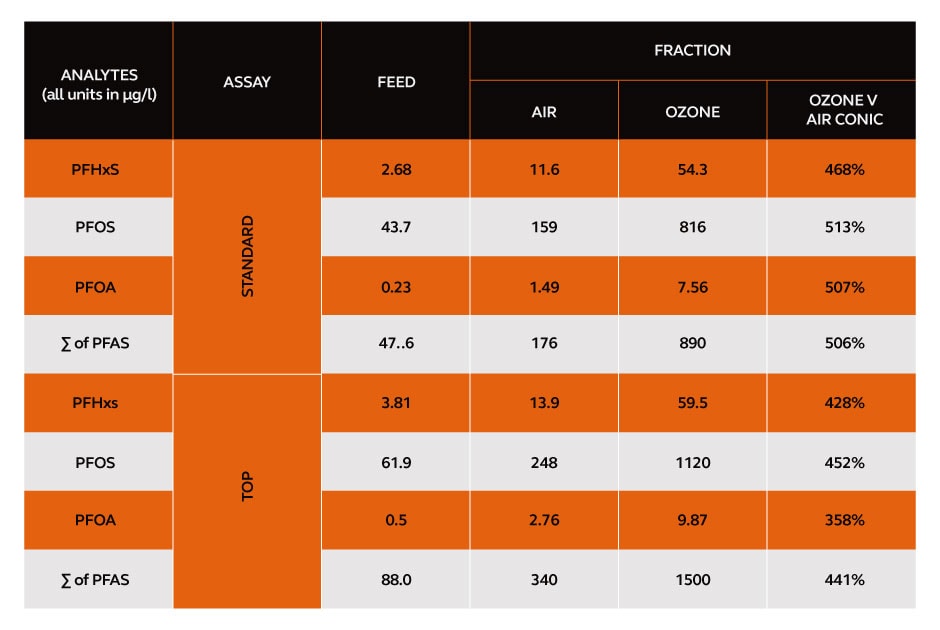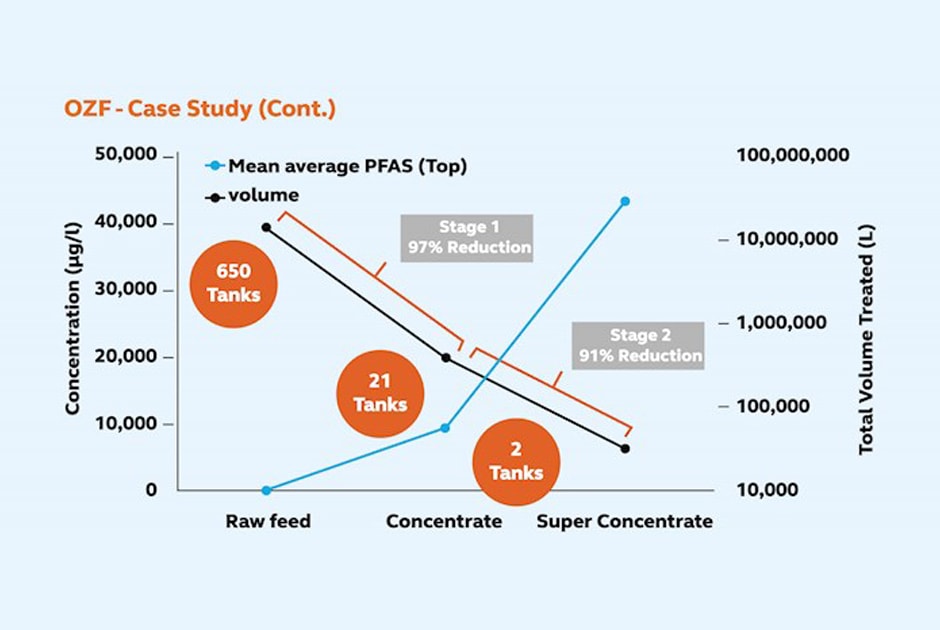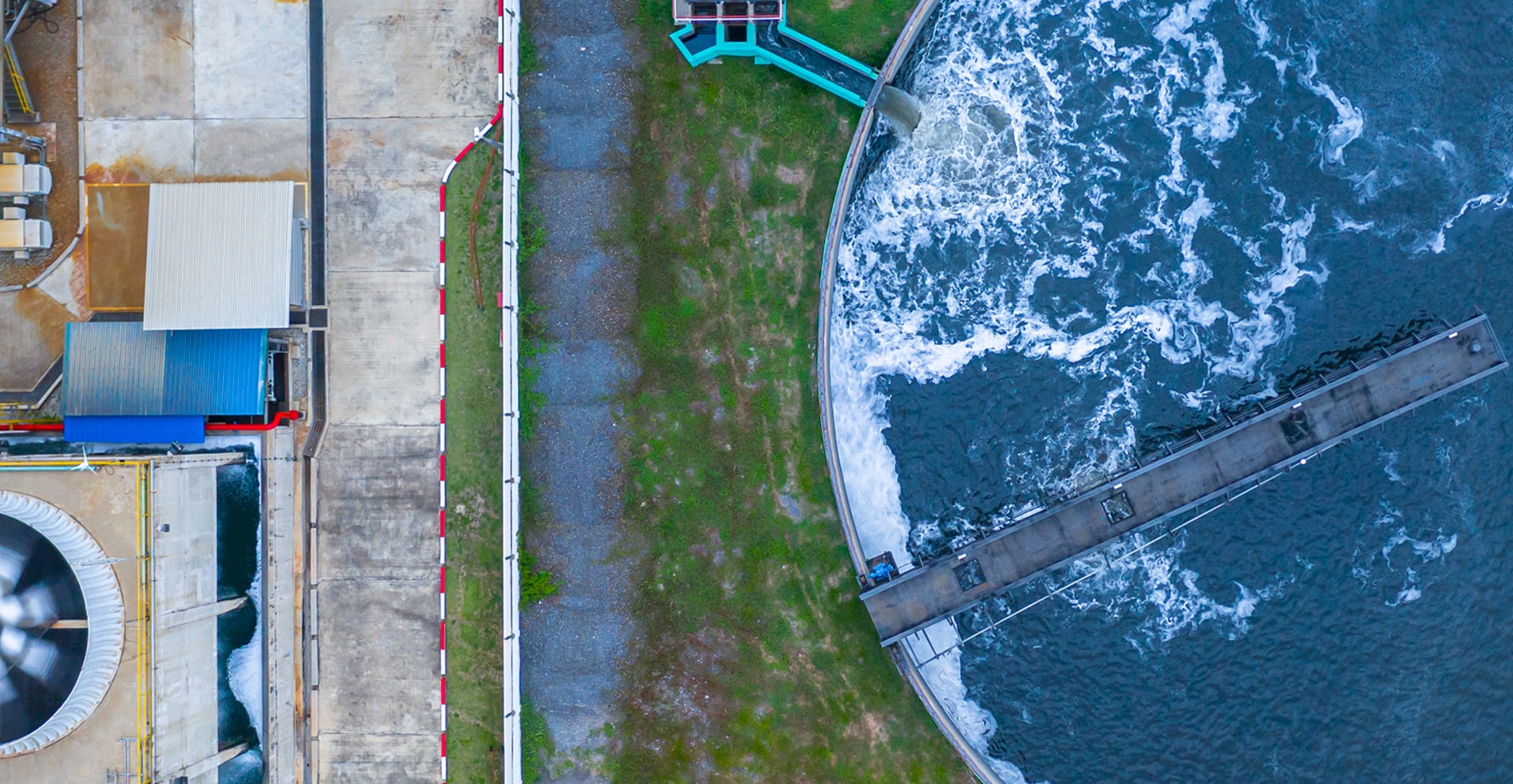Per- and polyfluoroalkyl substances (PFAS) are a man-made class of chemicals that have been used in thousands of commercial and industrial products for decades. They can now be found throughout our water supply and the environment, including remote areas around the globe.

PFAS are a problem because they bioaccumulate in the environment and in the body. While the long-term impacts of PFAS are still being studied, there is evidence to show that high levels of exposure to PFAS may lead to adverse health effects.
Fortunately, ozone-based fractionation (ozofractionation) is proving to be an innovative and cost-effective PFAS groundwater treatment technology.
PFAS treatment methods at a glance
Treatment of PFAS in groundwater generally falls into two technology buckets:
- Adsorption methods using granular activated carbon (GAC) and/or ion exchange resins.
- Separation methods such as foam fractionation or ultrafiltration.
Adsorption methods are hard to beat from a lifecycle cost perspective in cases where you have high treatment volumes, reasonably clear water with lower PFAS and/or other co-contaminant concentrations.
In other cases, ultrafiltration separation methods that rely on membranes and pressure (think reverse osmosis) are effective in separating PFAS and other contaminants from the liquid – however, they require the remediation of a brine stream (reject material).
Foam fractionation exploits the characteristics of PFAS to effectively remove the contaminant by adhering to the surface of bubbles – but the key is to select the right bubble gas for maximum efficiency.
Enter ozofractionation
Ozofractionation is a type of foam fractionation in which hydrophobic molecules are separated from a liquid solution using rising columns of foam. This works to remove the full range of PFASs (validated by TOP assay) by concentrating it in a small volume waste stream.

Figure 1 - Diagrammatic representation of a micro nanobubble (MNB) as it becomes populated with PFAS.
Ozofractionation differs from air-based foam fractionation in that it uses ozone to create the bubbles in the foam. Because foam fractionation relies on PFAS sticking to the bubble, the more bubbles (i.e. surface area) you generate and the higher the electrostatic charge on the bubble, the better the removal efficiency.
Research conducted by Evocra, along with third-party published studies, has shown that ozone is significantly more efficient at removing PFAS when compared to an air-based foam fractionation method . This is illustrated in the following table:

Historically, ozone in the foam fractionation process ran the risk of creating ultra-short-chain PFAS, thus minimising the effectiveness of the treatment method.
However, through years of rigorous testing and trialling, the ozofractionation method has been optimised to lower the risk of ultra-short-chain PFAS and maximise waste removal effectiveness.
A zero-waste PFAS treatment solution?
There are currently no silver bullets for treating PFAS in a liquid matrix, and each of the methods mentioned above have their respective sweet spots.
However, there is an argument to be made for ozofractionation as a potential zero-waste PFAS treatment solution.
Compare the alternatives: in adsorption-based systems, both single-use media can result in a large amount of contaminated solid material going to landfill or sent off-site for thermal destruction.
Similarly, ultrafiltration is reasonably energy-intensive and generates a high percentage (often more than 20%) of reject or material (brine) that doesn’t pass through the membrane. This may require additional treatment and/or disposal.
Ozofractionation, on the other hand, relies on the PFAS attracting to the surface of the bubble, which becomes a foam at the top of the treatment vessel and is subsequently removed for further concentration and destruction. It has a proven capability of concentrating PFAS into a liquid stream that can be cost-effectively transported off-site to a licensed destruction facility or when coupled with onsite destruction technologies that are just now starting to be commercialised can offer a zero-waste outcome.
Over the course of several commercial PFAS treatment projects, Arcadis, along with our technology partner Evocra, have optimised the removal of PFAS by choosing the right gas for maximum efficiency.
The graphic below shows waste concentration and volume reduction with ozofractionation as part of our Qantas Brisbane Wastewater Treatment project.

This demonstrates how ozofractionation offers both a commercial and compliance benefit to the market by minimising the waste volume and maximising the concentration of PFAS in the waste stream.
As part of Arcadis’ PFAS remediation solutions, we released our recent case studies of PFAS remediation using EVOCRA technology, highlighting the challenges and result achieved for our Australian clients.
Click here to view the case studies.



